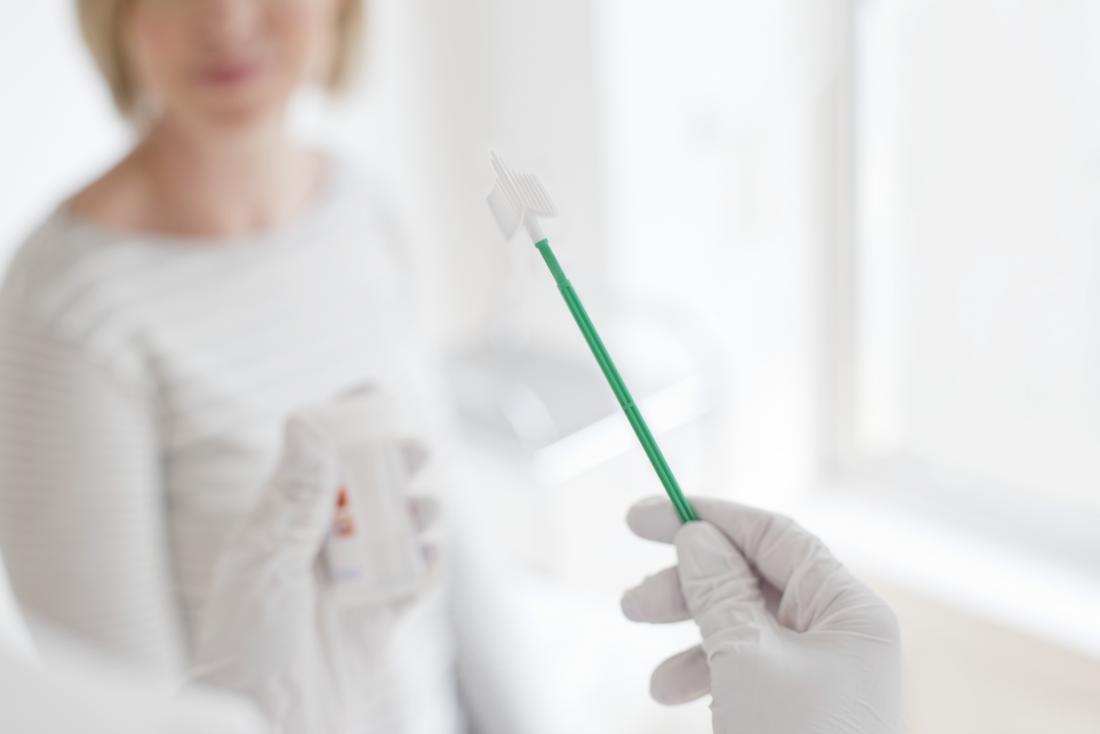These cellular changes can result from cancer, precancer, or the human papillomavirus (HPV).
During a Pap test, a doctor or specialized nurse swabs the cervix through the vagina. The swab removes cells that they can send to a lab for analysis.
In this article, learn more about Pap smears, including who may need one and what the results mean.
What is a Pap smear?

A Pap smear is a noninvasive procedure that doctors use to help diagnose cancer and precancer.
A Pap smear is a safe, relatively quick, and noninvasive test that looks for changes in the cells of the cervix. The name “Pap smear” comes from Dr. Georgios Papanikolaou, who invented the test.
A Pap smear removes a microscopic sample of cells from the cervix to test for cancer and precancer.
As part of a cervical cancer screening, some people also choose to test for HPV.
HPV causes most cases of cervical cancer. People who test positive for certain types of HPV may need more frequent Pap smears.
Some people experience minor spotting after the procedure, but there are no other significant risks.
The cervix is a donut-shaped group of muscles at the top of the vagina. It forms the entrance to the uterus. Except during childbirth and menstruation, when period blood passes through a pin-sized hole in the cervix, these muscles remain tightly closed.
Changes in the cells of the cervix can lead to cervical cancer. Without treatment, cervical cancer may spread to other organs, such as the uterus, ovaries, liver, and lungs.
Who requires one?
A Pap smear was once part of most annual visits to the gynecologist. However, guidelines have recently changed due to new research.
A Pap smear is usually not necessary for females younger than 21. After 21, the screening schedule is as follows:
- ages 21–29: screening every 3 years
- ages 30–65: screening every 3 years, an HPV test every 5 years, or an HPV test and Pap smear every 5 years
- those over 65 with a history of previous screenings: no tests
- those who have had a hysterectomy: no tests
Anyone with HPV who has recently had an abnormal Pap smear or who has other risks factors for cervical cancer may need additional tests or more frequent screenings.
Procedure and what to expect

A doctor can explain the procedure and the equipment they will use for a Pap smear.
A Pap smear is usually part of a regular gynecological exam or wellness visit. During the test, a person lies back on the exam table, usually with their legs in stirrups.
The exam requires a person to be nude from the waist down, though a doctor usually offers a sheet to cover the legs and help a person feel more comfortable.
Before the test, the doctor will insert a speculum into the vagina. This device looks similar to a duckbill. It separates the walls of the vagina for easy access to the cervix.
It is common to feel some pressure when the doctor opens the speculum, but it should not be painful.
Next, a doctor will insert a small, thin stick or brush into the vagina, all the way to the cervix. They will use this to brush away cells from the cervix. They then remove the instrument and put the cells in a petri dish for a lab to test.
Some people experience cramping or a dull ache in the lower stomach during a Pap smear. The sensation usually stops as soon as the test is over. Others may notice light spotting for 1–2 days after the test.
Results
Most clinics offer test results within a few days. In some cases, they will only contact a person if the results are abnormal.
If the test is normal, a person might not need this screening for several years.
However, some research suggests that the test is less effective in women with obesity. For these women, the doctor might recommend a follow-up in 1 or 2 years.
If the test shows abnormal cell growth, it does not mean that a person has cancer. It just means that the cells have changed.
A doctor may recommend additional testing to determine the cause of the changes. These tests can include:
- another Pap smear
- a colposcopy, which is a procedure that closely inspects the cervix for signs of disease and cancer
- an HPV test
- a biopsy of the cervix
- a sample of the endometrium, which is the tissue that lines the uterus
Treatment

If the results show precancerous cell growth, a doctor will recommend treatment.
If a person has precancerous cells, a doctor may recommend a procedure to remove them.
There are several options for removal, including removal with a laser or with an electrical current. A healthcare provider will numb the cervix and may offer sedation during the procedure.
If a person tests positive for HPV, they will not usually require treatment. HPV is often asymptomatic, meaning that a person may not experience any symptoms.
Sometimes HPV can cause genital warts. These warts usually go away without treatment over time. However, creams and other treatments are available if they are bothersome.
Some types of HPV can lead to cancer over time. It is important to note that this process is very slow, so anyone with these types of HPV may only need more frequent Pap tests. It takes, on average, 3–7 years for abnormal cells to become cancerous.
Treatment for cancer depends on how far it has spread, the person’s overall health, treatment goals, and other factors. Read more about cervical cancer and its treatment here.
Outlook
A Pap smear is a routine test that can help doctors catch the early signs of cervical cancer. Early detection of cancer can help ensure that treatment is successful.
Cervical cancer survival rates are much higher than those for most other types of cancer — in part due to Pap tests helping doctors diagnose the disease before it has had a chance to progress.
The 5-year survival rate for cancer that is only in the cervix, for example, is 92%. This means that 92% of people with that type of cervical cancer were still alive 5 years after their diagnosis.
An abnormal Pap smear can be stressful, especially while waiting for follow-up tests and results. Not all abnormal test results indicate that a person has cancer.
A Pap smear may be scary, especially for people who have or who think that they may have HPV and for people who find gynecological exams uncomfortable.
Early and regular Pap tests can be life-saving, so anyone who is due to have one should not delay it.

